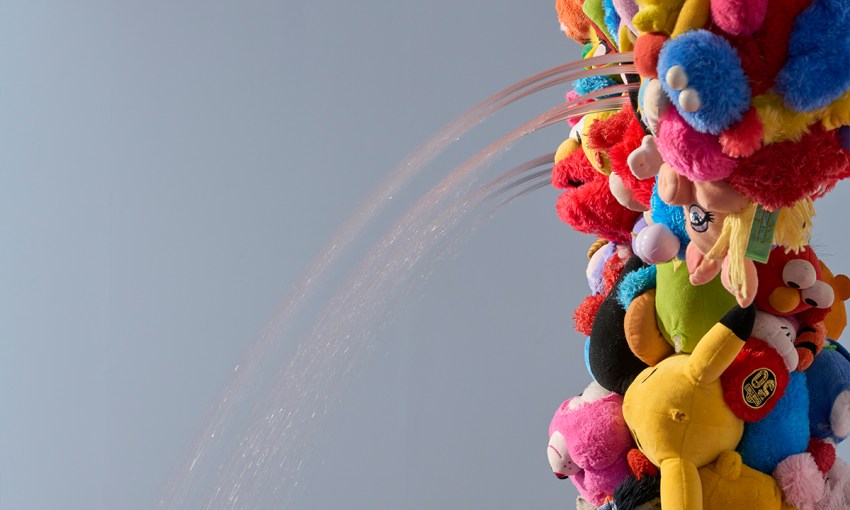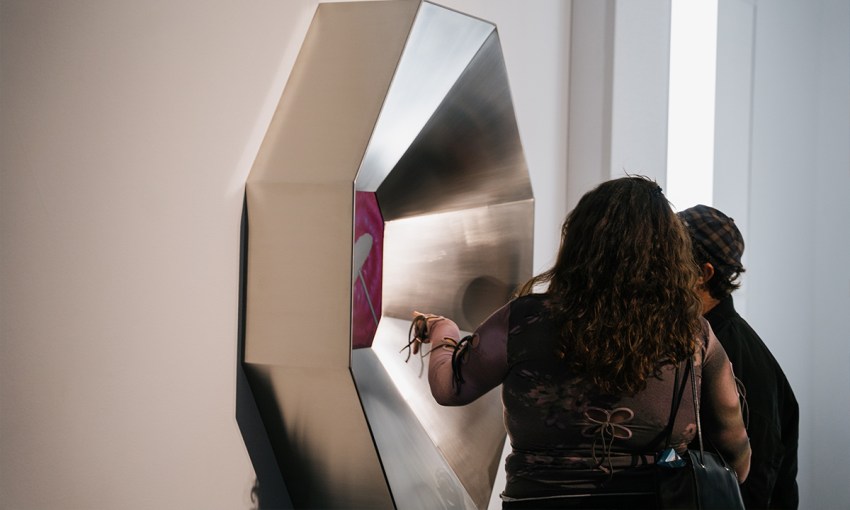We check in with the final group of artists from Adelaide Contemporary Experimental’s annual studio program.
New wave: Artists from ACE’s Studios: 2023, Part 2
Following our story on Adelaide Contemporary Experimental’s annual Studio Program, we check in with the final two artists to see how their practices and careers have evolved during their time at ACE.
Studios: 2023
11 November–16 December
Adelaide Contemporary Experimental
Lion Arts Centre
North Terrace, Adelaide 5000
More info
You can see the work of all of this year’s artists in Studios: 2023 co-curated by ACE associate curator Rayleen Forester and Murray Art Museum Albury curator Nanette Orly.
JENNIFER MATHEWS
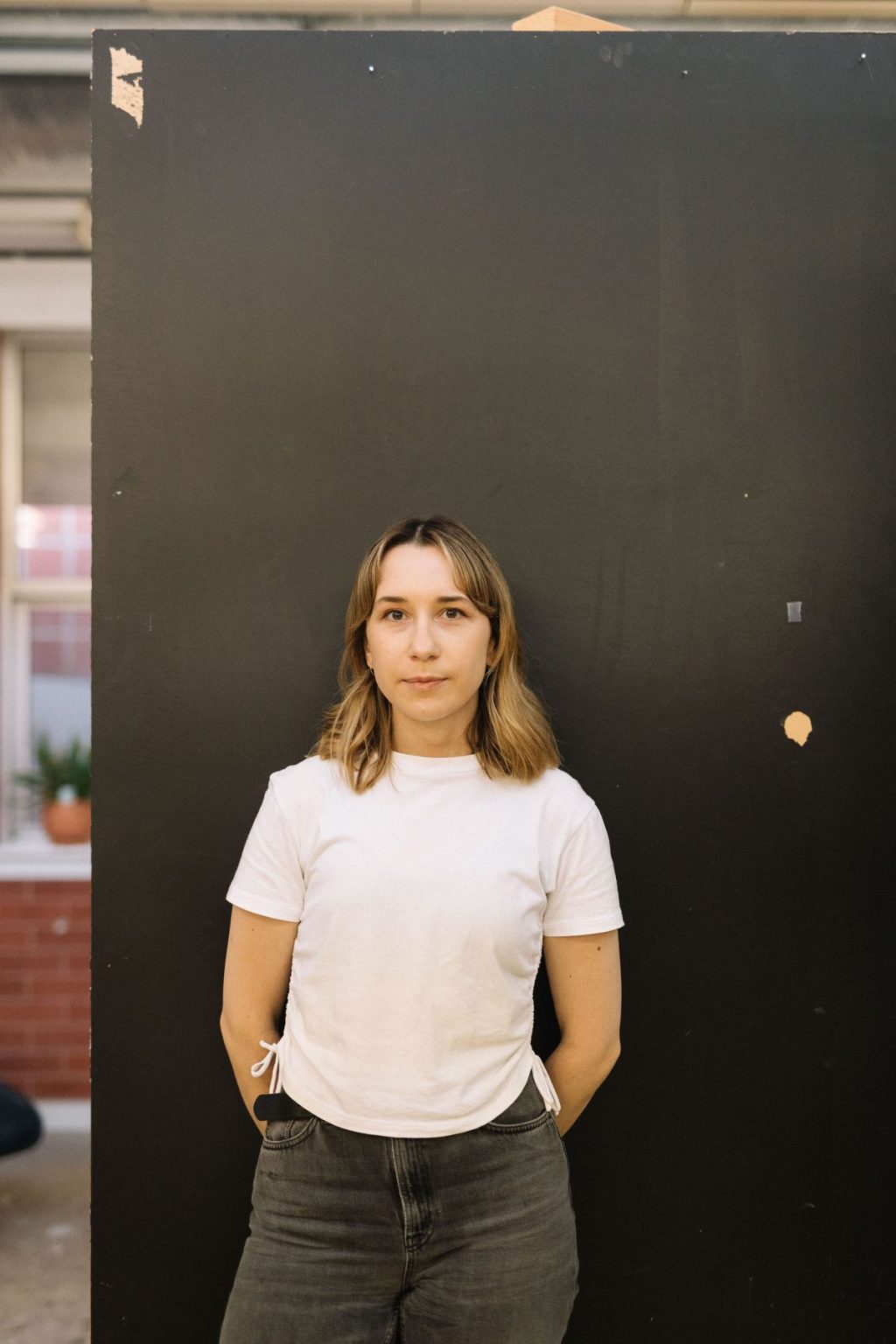
Describe the work you’ve created for the Studios: 2023 exhibition.
I am presenting some stainless steel sculptural and wall-based works that I made earlier in the year for my exhibition Staple at Laila, Sydney. I’ll be pairing these with some new work – a set of three conjoined waiting room chairs using laser cut and folded stainless steel, with fried eggs made of resin inserted into the backs of the chairs. To reframe and expand on the body of work, I am building an environment for my artworks to inhabit, which is something I am yet to explore but feels important as my work is so visually and conceptually informed by architecture.
Titled Waiting to get cooked, the installation considers the impact of contemporary built environments, and the absurd contradiction of living in a time where resource scarcity and excessive consumption coexist. Influenced by the ‘aesthetic deprivation’ prevalent in everyday built environments, like hospitals and offices, the work seeks to reshape notions of functionality and efficiency.
How has your ACE residency influenced the work you’ve created?
I have been able to create a lot of work in a short span of time. I’ve never really been a studio night dweller, but the accessibility and comfort of the studio has had me working during evenings a lot. It’s the biggest studio space I have ever had to myself, and that has allowed me to lay out the sculptures I am working on, plan or reflecting on.
Having the support of ACE staff, visiting curators and studio artists has influenced the work in the sense that I am allowing many varied external inputs and perceptions to filter into the work while it’s under construction. This has both allowed me to interrogate creative doubts and to understand how the artworks are digested by others.
How is your personality reflected in your work?
I think there is a seriousness but also a quiet humour to the work that reflects my personality.
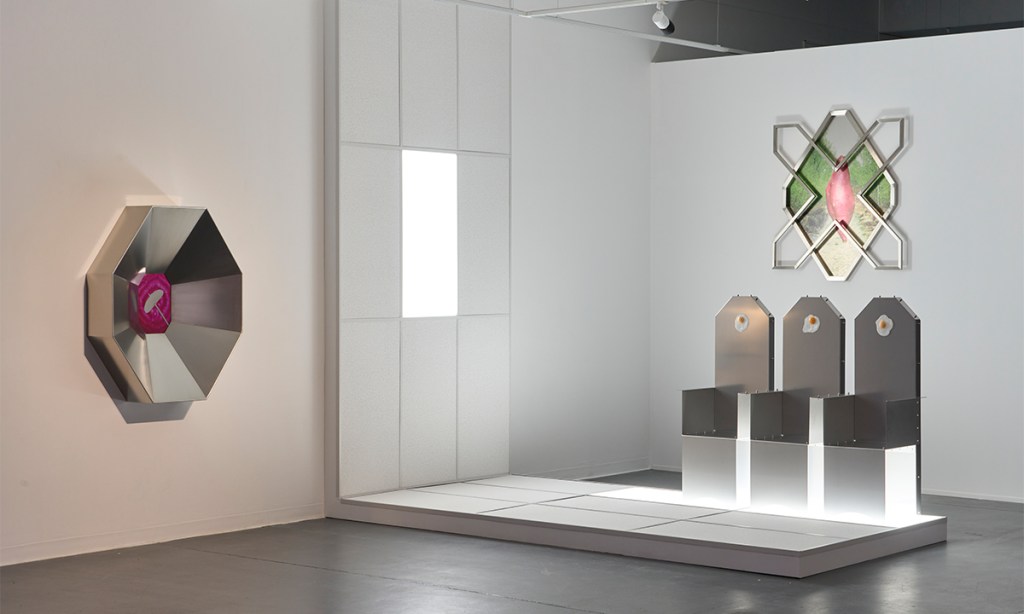
Studios: 2023 (2023), installation view, Adelaide Contemporary Experimental. Photography by Sam Roberts.
Did the other artists in the program influence you during the residency?
I feel grateful to have undertaken this program with the other artists and to share common threads of interest and experience – through conversations about food, environment, loss and family. These exchanges, alongside advice that is shared throughout our various projects, inevitably influences how you operate.
Also, the things that I enjoy the most about the other artist’s work have influenced how I would like viewers to feel when they experience my own work. Whether it’s questioning deeply embedded systems of power or quietly layered reflections on loss, seeing the other artists delve into these themes inspires the need to find relief in making.
What’s next for you?
After having exhibited this year in Sydney and Canberra, and sharing work at Spring Art Fair in Melbourne, I am looking forward to a period of development and sponge-like existence following a stretch of artwork production. I’m currently working toward setting up a new studio space in Kent Town with the collective previously known as George Street Studios. I’m keen to establish the studio residency spaces there, and to nourish the working relationships I have built this year.
TRUC TRUONG
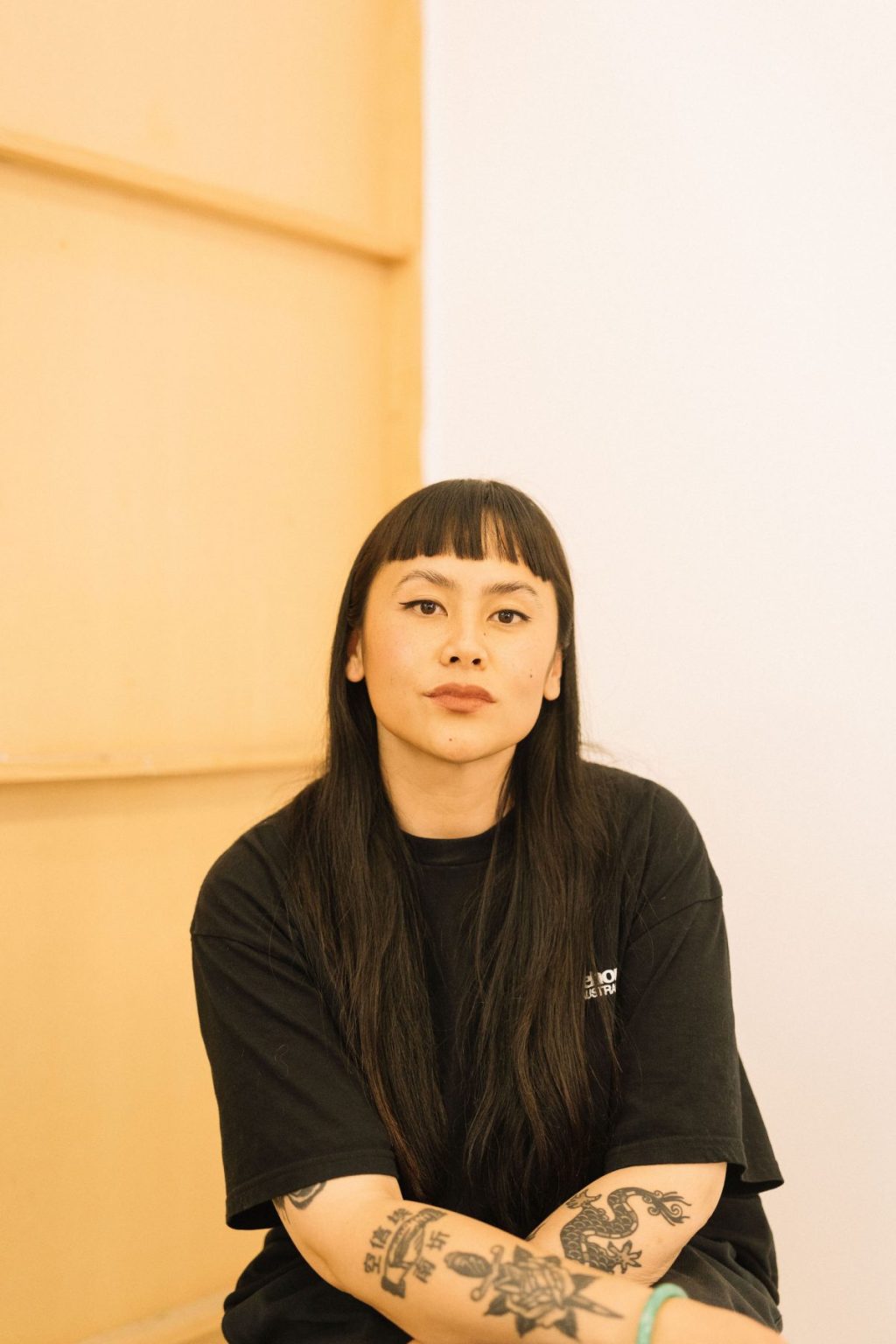
Describe the work you’ve created for the Studios: 2023 exhibition.
Buoyancy stands as a tribute to my late grandfather’s spiritual journey and has become a contemplative space that I’ve created to speak to him. It’s a work attempting to bridge realms of spirituality, looking at the intricate themes of love, faith, family, migration and power. At the core of a blow-up pond, a crucifix is adorned with cut-up soft toys, symbolising childhood complexities, the impact of various influences and how indoctrination and life experiences shape one’s thinking. Outside of the pond is a koi statue that serves as a metaphor for migration, mirroring the way koi fish’s legality varies in different regions in this country, highlighting disparities in who is granted entry. The work is also accompanied by a performance called What is Love? and was a great excuse to work with people I love.
How has your ACE residency influenced the work you’ve created?
Having to speak to a range of people about my work in the studio program has given me a better understanding of why and how I work. I think being encouraged to articulate certain aspects of my work has given me confidence in what I do and how I do it.
How is your personality reflected in your work?
The materials and processes I use are a direct reflection of the way I think and navigate life. I tend to gravitate towards materials and methods that are accessible and relatable, mirroring my constant consideration of accessibility and inclusivity. Even when I collaborate, it’s typically with groups that share a similar ethos to ensure that my work remains a genuine extension of who I am.
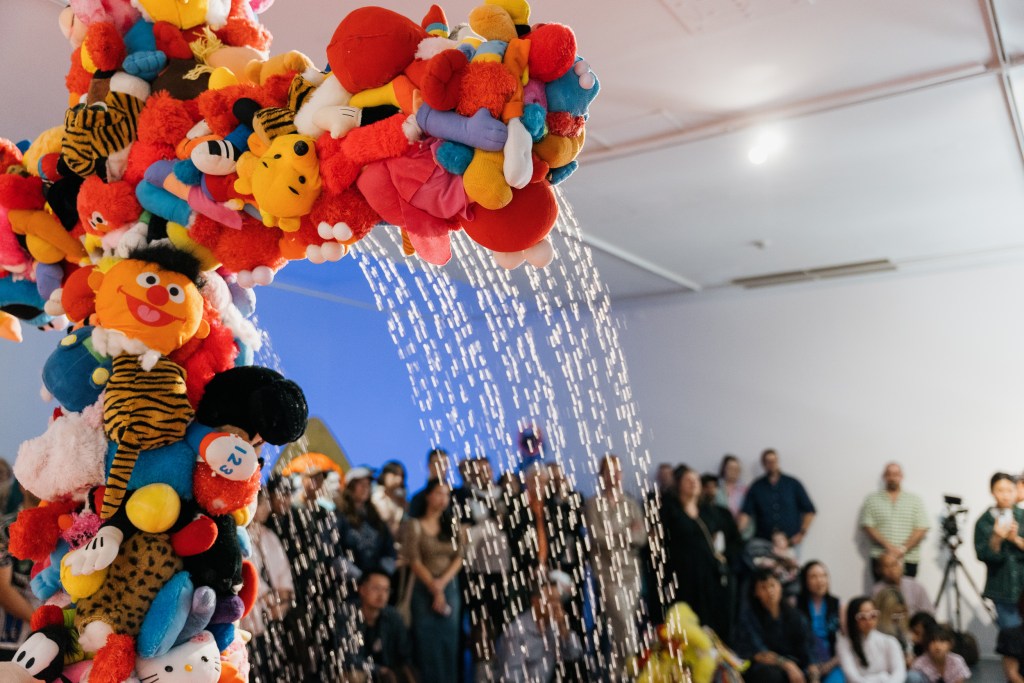
Opening Night: Studios:2023 (2023), event documentation, Adelaide Contemporary Experimental. Photography by Lana Adams.
Did the other artists in the program influence you during the residency?
I think it would be hard not to be influenced by people you are working with closely. I was influenced by their determination and willingness to be sarcastic, funny, serious, supportive and kind. It has been an honour to be surrounded by some of the most talented and lovely people I have ever met. It will be great to see their names all over the place and for me to say, “I shared a studio with them!” I wholeheartedly believe I will be saying that often into the future.
What’s next for you?
I have an upcoming trip in December to Vietnam for a few weeks for research and development made possible by the Ian Potter Cultural Trust. I have not been back since I started studying art, so it’ll be good to document and do some proper research while I’m there. Other than that, hopefully not much. Rest is inevitable at this point because I am very tired. I plan to work a regular non art job next year to catch up on some very late bills. I want to be able to pay for family and friends’ meals because over the past 5 years of doing this art stuff, I’ve had so many people step in and support me financially. Now that I have done this, I am much more confident in knowing that I can continue to have my own studio and practice on the side and for it not to take over my life.



